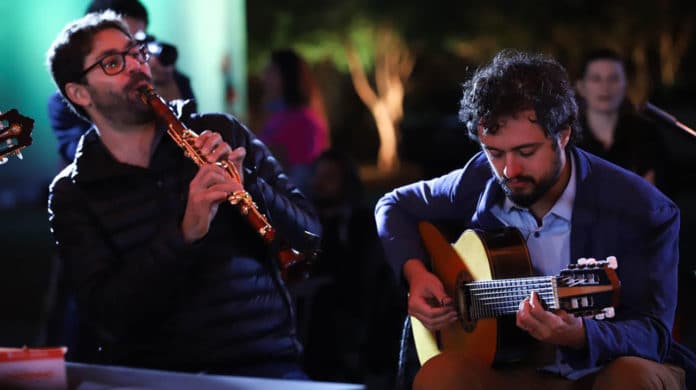Choro is a predominantly instrumental music tradition that emerged in Brazil around 1870. Choro can be conceptualized as a category that includes three meanings:
- It is a social musical event.
- It is a style, a manner of making music.
- It is a genre that contains specific musical traits or features.
A new study by the EPFL‘s Digital and Cognitive Musicology Lab (DCML) identifies key stylistic traits from some 300 pieces of choro music, providing an unprecedented empirical analysis of the genre’s harmony and form.
The study was led by Martin Rohrmeier, in which scientists used data science and statistical techniques to characterize Choro’s musical style. Also, the study represents an opportunity to investigate music outside the traditional canon generally studied by musicologists.
The study’s motivation originated from DCML colleague Willian Fernandes Souza of the Federal University of Rio de Janeiro in Brazil, himself a choro musician and expert. He brought his insight into the genre of the study. At the same time, lead author Fabian C. Greenery, a postdoctoral scientist in the College of Humanities, acquired his experience corpus research and data science.
Moss said, “We received some criticism on the Beethoven paper to the effect that Beethoven had written enough. There are good points to this criticism, as such studies often confirm inherent biases in our field, like that of ‘dead, white, male’ composers as musical masters or geniuses.”
“This choro dataset lies outside of the core musical canon of composers that are traditionally studied, and we think that doing more research on peripheral and unstudied genres is very important to understanding what music is as a whole.”
Scientists interpreted some 300 pieces of choro sheet music from the last part of the 1800s to early 2000s, chord by chord, into a machine-readable format that could be utilized for algorithmic analysis. Through this examination, they notably found that examples of chords and keys in choro pieces seem, by all accounts, to be very different from those in other musical genres that have been studied quantitatively, for example, classical music.
Moss explained, “The rules of harmony that define the style are very different at the local, or chord level, and at the global, or key level in classical music, these two harmonic levels would be more closely aligned.”
“The reason for these differences in Choro is beyond the scope of this study, and it’s a question they’d like to pursue in the future. However, he speculates that it may have something to do with Choro’s improvisational and collaborative nature compared to classical pieces.”
“Choro is more popular, street music, and the notation is not as elaborate as in classical music. The chord and key patterns we see may make it easier to pick up a guitar and participate in a choro performance and intuit what comes next. Choro is not simpler than classical music, but for an interactive setting like this, the complexity must lie elsewhere than in the harmonic progressions.”
What scientists found in- the chords themselves have changed over the past 150 years. Whereas three or four notes were once played simultaneously to produce a chord, over time, chord extensions – which bring five or six notes to a chord – became much more frequently used, especially after the 1950s.
Moss said, “This was a really cool and completely new finding. We believe that this increase is due to jazz’s influence on Choro, but we would need to do further research to confirm this.”
“These kinds of empirical, quantitative studies of music are essential, not only because they are more efficient than manual studies – using computational methods, you gain a complete picture more easily – but also because they can help improve the discipline of musicology itself.”
“If you take a traditional music analysis text, you will find that concepts, like keys, are often vague or not at all defined. Computational approaches force researchers to be precise about the methods they apply, and being forced to quantify things helps you think more clearly about what you are studying.”
Journal Reference:
- Fabian C. Moss, Willian Fernandes Souza & Martin Rohrmeier (2020) Harmony and form in Brazilian Choro: A corpus-driven approach to musical style analysis, Journal of New Music Research, DOI: 10.1080/09298215.2020.1797109
